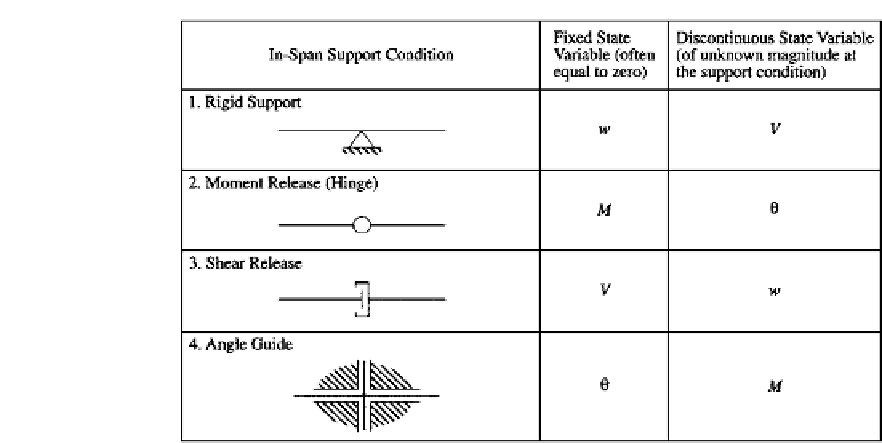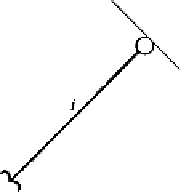Information Technology Reference
In-Depth Information
FIGURE 5.26
In-span indeterminate conditions.
FIGURE 5.27
A “half” hinge.
This type of occurrence is usually more readily taken into account in using the displace-
ment method than it is with the transfer matrix method. Often the effect of such conditions
is to constrain a global DOF, e.g., when a rigid support at a node completely restrains the
displacement in the direction of a component of
V
, and then this displacement is simply a
prescribed global displacement. In such cases, set one displacement in
V
equal to zero.
On the other hand, it is possible that such indeterminate conditions affect only one of
several elements meeting at a certain node. The hinge shown in Fig. 5.27 is such a case.
To set a global DOF equal to zero would be improper modeling. However, the effect can
be accounted for on the element level. To see this, suppose the forces
p
2
of element
i
are
constrained to be zero at a node. Rearrange the element stiffness matrix as
k
11
.
k
12
...... . ......
k
21
p
1
......
p
1
......
0
v
1
......
=
=
(5.101)
.
k
22
p
2
v
2
k
i
p
i
v
i
=
Such a reordering of the stiffness matrix is for conceptual purposes only. If
p
2
is a single
v
2
is a single displacement, and
k
22
, for example, is a scalar. Thus, in the case of
force, then









Search WWH ::

Custom Search